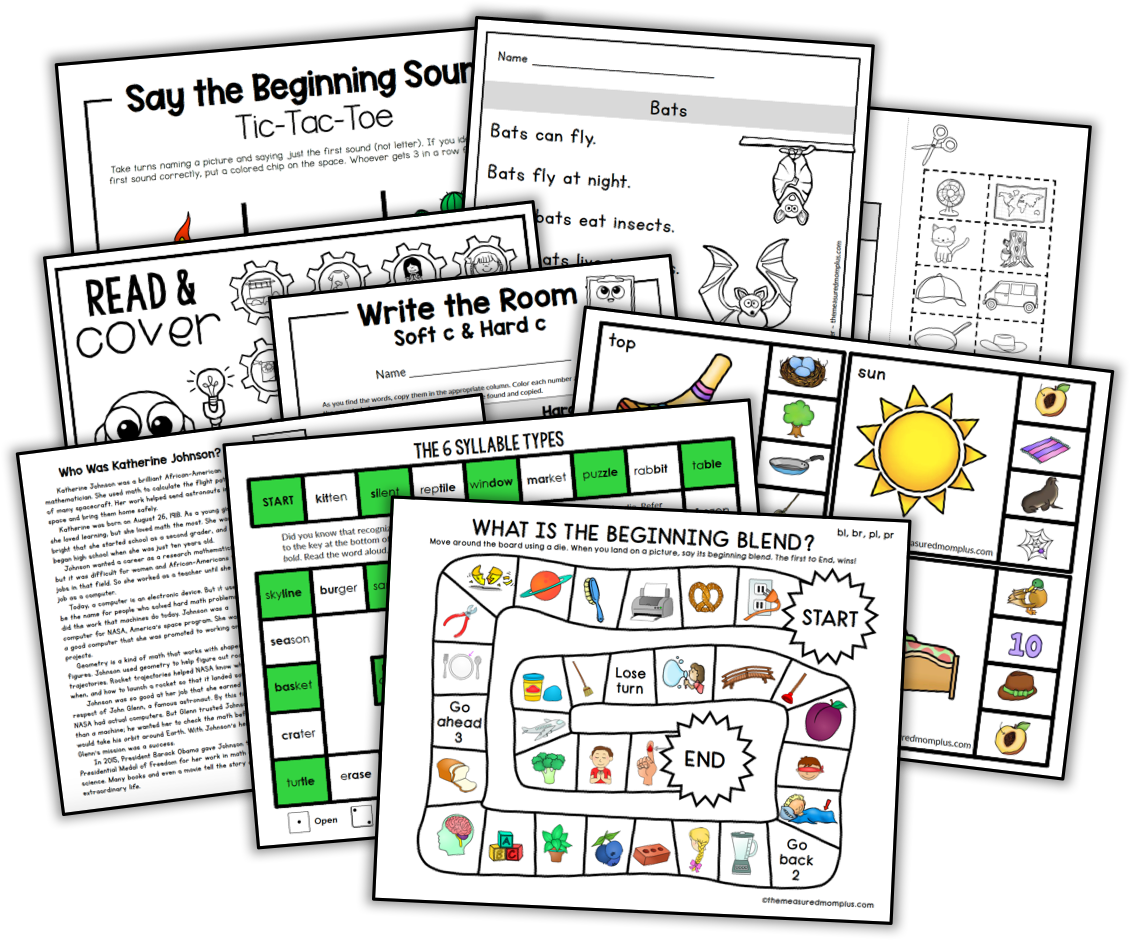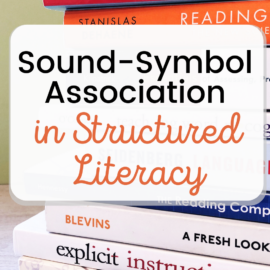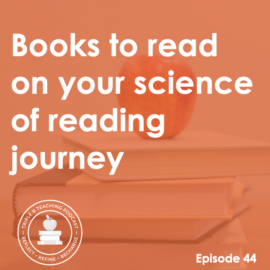
We hope you enjoy this free printable book to help improve reading comprehension!
The book comes in two reading levels – one for grades 2/3 and one for grades 3/4.
Let’s take a peek at If You Lived in Kenya.

How to print and assemble
But first – a quick tutorial to assemble your book. Choose the version you’d like, and print the four pages of the book FRONT TO BACK. And this is important: make sure you FLIP ON THE SHORT EDGE. Otherwise the pages will be upside down.
Then fold in half and open back up.

Use a long armed stapler to bind the book. Easy peasy!

And there it is – a black and white reader that will help students improve their comprehension. (The questions are even included!)
How we used it
I decided to use this book with my Six. He’s near the end of first grade and is an above-average reader. But his comprehension isn’t always the best.
To begin, we looked at the cover, and he told me what he might learn in the book.
“What do you think we’ll learn about Kenya?”
“Like about Africa, and stuff.”

“Well, let’s find out. First, let’s go through the book and look at the headings. Let’s read them before we actually read the book so we know a little about what to expect. Can you read me the headings?
“Geo-graph-y?
“Geography.”
“Daily Life. Food. Wildlife. Culture. Sports.”

“Oh, what’s this in the back?”
“A glossary?”
“Yes – it’s a special place that tells you the meanings of some words in the book.”

After this little preview, it was time to get started! I listened to my Six read each section aloud.

When he came to a word he didn’t know, he immediately went to the glossary to find out what it meant. I had no idea he would do this all on his own. Yay!

“What’s a matutu?”

“Oh, a minibus.”

After reading the entire book, it was time to answer the questions. He didn’t have much trouble until he got to #4.
“What are two ways your daily life might be different if you lived in Kenya?”
His answer was, “They have Indians.”
Besides being completely untrue, it didn’t really answer the question.
“Hmm. Do you remember reading about that in the book?”
“Well, no.”

So we went back to the text. I showed him the key word in the question: “daily life.” Then we found the “daily life” section of the book, and he read some of it again. Finally, he changed his answer to say:
- You might not have electricity.
- Your house could be made of wood, grass, or mud.

Another challenge came with #7. The question asks students to use a word from the glossary to fill in the blank.
____________ is a popular sport in Kenya.
My son wrote, “soccer or running,” which was correct, but not in the glossary.
I directed him to the glossary, where he found the correct word: “cricket.”
And there you have it!
Suggestions for use
- Print just one copy to use in a tutoring session or at home.
- Print a small set of books to use with a guided reading group.
- Print and copy enough books for an entire class set, but be sure to print a simpler version for readers who need it.
Questions you might have
- What reading level is the book?
The easier book is at a mid to late 2nd grade reading level.
The harder book is at a mid to late 3rd grade reading level.
- Why is it printing funny? The backs are upside down.
You have to make sure that you choose “flip on the short edge when you choose front to back” or “short edge binding” after you choose “print front to back.” The wording will vary, depending on your printer.

Get your free reading comprehension reader: Kenya!
BUILD COMPREHENSION WITH OUR RESPONSE PACK!

$18.00
Help your readers find chapter books they’ll love with these themed book lists. Then use the 75 reading response sheets to help them make sense of what they read. The response sheets focus on character, setting, plot, and vocabulary.





Patti
Thank you! Our lil grandson was only four when we learned a bit about Africa, and he absolutely wanted to continue with their games of Shisma (our homemade version) and Mencala, as well as a large traceable of just the shape of Africa, and of course the Safari animals!! We added the story of Simon of Cyrene who came from Africa and helped Jesus carry His cross, and the cute camera abc’s to find on his Safari around the house. He is almost six now, so this book is absolutely just perfect!! Colored pencils are his favorite for books like these!! If you decide to put together any other books re: countries, we would love to be able to print and use!! Respectfully, grandma Patti
Anna G
I’m so glad you can use this, Patti! :))
Ruweyda
Hello Anna,Thank you so much for all your wonderful resources . This touched my heart because l am Kenyan. I appreciate your research on Kenya and its rich and diverse culture. Asante sana
Anna G
You’re so welcome, Ruweyda!
Rachel
I am working on reading comprehension with my 2nd grader. This is perfect! Thanks so much, Anna. Look forward to more!
Anna Geiger
I’m so glad these will work for you, Rachel!
j
Yeesss! More please. We have worn out your other books–will have to make new ones for the final crop of kids. Thank you megabunches.
Anna Geiger
Thank you – I do plan to make and share more over the next two months. 🙂
PHANUEL MURENGA
dear Ann
im more humbled by this great work from you.may you beblessd more.hope you will keep me updated.
Anna Geiger
Thank you, Phanuel!
Jeannie
Great job on this book. Looking forward to trying it out. When will more be available?
Anna Geiger
Hi Jeannie! I do hope to have all 15 books bundled and ready to sell in 60 days or less. I will be sharing some of those books for free in the next two months (I hope!).
Moo
Actually, he is kind of right. There are many Kenyan Indians in Kenya in part due to its colonial history. They are Indians from the Indian subcontinent as opposed to Native Americans. And on a positive note, if you are in Kenya, you might have fresh mango, avocado and banana in your garden – so delicious! You might play with lots of friends and family outside in the sunny weather throughout the year.
By the way, Ugali is more like polenta than porridge. Same consistency except its not cooked with stock or garnished cheese. And the closest to Sukumawiki is collard greens. They are in fact the same in many cases.
Congrats on wonderful materials. I tried using some of the free ones for my workers kids that I teach as they have such a bad start to their education. With so much respect from Malawi!
Anna Geiger
Thanks for all the feedback, Moo! My little guy doesn’t know about India yet, so I’m sure he meant Native Americans when he used the word “Indians.” 😉 I struggle when writing these books with knowing how specific to get in many cases. I did read about collard green and sukuma wiki, but decided to keep it simple. And since most 2nd -4th graders in this part of the world don’t know what polenta is, I used a word they would understand. I appreciate your comments!
Moo
I actually found his answer funny/cute but was just “having his back”. As for the the foods, I just thought, it case he asks/or you want to explore more, that is what you could work with. I realise it sounds rather critical but it wasnt supposed to be.
You really have some great materials and I appreciate them a lot
Anna Geiger
I didn’t take it as critical, just helpful – I’m sorry if I gave the impression that I did. I do appreciate the feedback on these readers because even with all my research I’m sure I will get things wrong!
Susan
I love that they are black and white, color is so expensive to print. Thank you for sharing! I love all of your materials.
Anna Geiger
Thank you, Susan!
Stephanie
This is just what I have been looking for. Our 3rd graders learn about different countries (Egypt, Brazil, Japan etc…). As a special education teacher, I have a hard time finding books at their reading level that they can use to do research. Having two different levels is great for differentiation. Can’t wait to see the rest.
Anna Geiger
Yay – I’m so glad to hear these are useful for your students, Stephanie! I look forward to creating and sharing more.
Beth Keen
I really like this! Do you have any idea of your time frame for more?
Anna Geiger
HI Beth! My goal is to have all 15 readers done and ready to sell in 60 days or sooner. I hope to be releasing about 5 of those sets for free, but I’m not sure exactly when.
Tk
Hi!
Thank you so much for all your hard work Anna! This is going to very useful for my six year old.
Anna Geiger
I’m so glad to hear that!
Carolyn
Brilliant!
Love that they look like “real books” with the staples and all. I know that the kids love this and gives them a certain sense of ownership, which always helps when it comes to taking care of them! 😉 Wish they did have a little color though, always makes them more attractive; especially with maps to draw the kids attention to.
My experience with non fiction has been excellent when it comes to kids. Seeing it used to b.o.r.e. me when I was young (you should’ve seen some of the texts they used to give us, urrrrgh!), today’s kids are very curious and love taking in this kind of information – if and when it’s nicely presented, as it is here!
Thank you!
Anna Geiger
Hi Carolyn! Thank you for your input. In the future I’ll also include color versions, which is easy to do. When I have a chance I’ll go back to this one and add that. Overall I get so many comments from people complaining about how much ink my printables use, which is why I thought I’d keep these black and white. But I’m with you – I like color too. 🙂
Nancy
Love this new series. Like that it is black and white since my school is picky about what we use the color printer for!
Jane Peters
Love the fact that these books are non-fiction. Is this the only one so far?
Anna Geiger
So far, but I’m working on more. Stay tuned! 🙂
Julie
Love the study of countries at an early age. We are not alone on the planet! Really nice job, Anna.
Anna Geiger
Thanks, Mom. 🙂
Heather
I work with very tactile students. They like to touch/stroke everything so staples often get stuck into fingers. I find using a figure eight of embroidery floss (think friendship bracelets) knotted on the outside of the spine works very well. Use a needle to poke three holes in the spine of the book and weave the floss in and out of each hole till you get back to the start.
Perhaps this would be helpful to someone else.
Anna Geiger
Thank you for that tip, Heather!
Christine
Great idea! Plus, sometimes the staples can be a distraction to the “average ” child too. Then you end up with someone who pokes themselves! Never would have thought of that that! Thank you!